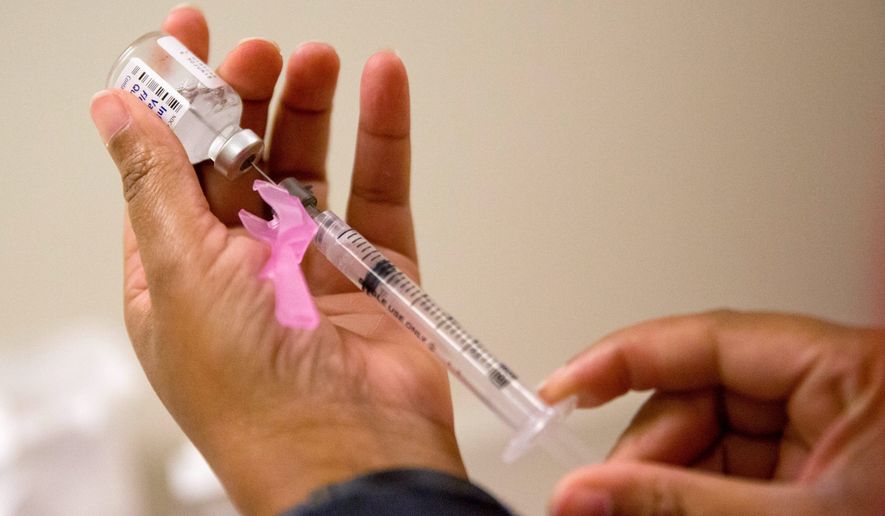
Australia's emerging flu season provides insights to U.S.
by Shen Wu TanHealth experts say they don’t expect the coronavirus to slow down flu vaccine production in the U.S. and actually are anticipating producing more vaccines for the upcoming season.
What’s more, preliminary data out of Australia, where the flu season is underway, shows an increase in vaccinations, despite lockdown measures due to COVID-19.
The surprising assessment about the upcoming flu season comes as the medical community is focusing on devising a vaccine or cure for the coronavirus, which has hampered food supply chains, shut down transportation and manufacturing industries, and closed universities conducting various types of research over the past two months.
Still, manufacturers expect to produce more than 188 million doses of the flu vaccine for this season, compared to 175 million doses last season, according to Litjen Tan, chief strategy officer of the Immunization Action Coalition, a nonprofit that distributes information about vaccines and the diseases they prevent.
“The reason they increased supply was because of the anticipating impact of COVID,” Mr. Tan said. “I think they really bumped it up because we really want to get the flu off the table this year. We really want to get people protected so that when COVID-19 resurges we’re not going to have flu as a competing factor for health care but also as a competing factor for diagnosis since symptoms are pretty similar.”
In Australia, about 62% of the population has received a flu vaccination this year, compared to 41% last year, Mr. Tan said, citing provisional numbers.
The flu season in Australia spans from April to October, usually peaking in August. For the U.S., flu activity begins to increase in October and most often peaks between December and February.
Since the vast majority of flu vaccines are manufactured with eggs, efforts to develop a vaccine for COVID-19 should not impact vaccine production for influenza, said Dr. William Schaffner, an infectious disease specialist at Vanderbilt University.
The coronavirus outbreaks in the U.S. appeared during the tail end of the flu season, and there have been a handful of reports of patients being infected with both flu and COVID-19 at the same time, Dr. Schaffner said.
“What we anticipate is that there will likely be a double-barreled respiratory virus season with both flu and COVID-19, more or less simultaneously active,” Dr. Schaffner said. “And of course, the two of them resemble each other in clinical presentation, which will lead to a lot of confusion and concern both on the part of the public and providers.”
Influenza and COVID-19 share many symptoms, including fever, chills, muscle aches and cough, which tends to be dry with the coronavirus. Other COVID-19 symptoms: shortness of breath, difficulty breathing, loss of taste and smell.
The coronavirus has infected more than 1.6 million people and killed more than 97,000 in the U.S. as of Monday, according to the Johns Hopkins University coronavirus tracker.
Last season, the flu sickened between 39 million to 56 million people, hospitalized 410,000 to 740,000 and killed 24,000 to 62,000 in the U.S., federal estimates show.
The estimated fatality rate for COVID-19 is between 3% and 4%, while the mortality rate for influenza is usually below 0.1%.
While manufacturers expect to produce more flu vaccine doses this year, infectious disease experts worry it might be more difficult to get a flu shot due to the coronavirus pandemic.
“Distribution may be an issue given that people usually go to their doctors’ offices so a lot will depend on the ability to go to your physicians’ offices in the fall when we start administering the vaccine. It will be difficult to have big efforts where you have big clinics where people go and get their flu shots,” said Dr. Sandro Cinti, a professor of infectious diseases at the University of Michigan, Ann Arbor.
He added that it’s important to push people to get the flu vaccine to prevent influenza and to lessen confusion over whether a respiratory illness is the flu or COVID-19 while freeing up the health care system more to respond to coronavirus cases.
While Dr. Cinti thinks people will be able to visit most doctors’ offices to get flu shots, he said there might be more barriers such as booking an appointment when physicians are trying to avoid full waiting rooms.
People might rely more on drive-through and curbside clinics to get their flu shots this season, Mr. Tan said.
“If there were ever a year to get vaccinated against the flu, this is it,” Dr. Schaffner said, adding he hopes COVID-19 ends up being a seasonal illness so that people can get a break from the viral infection.
Health officials recommend that everyone 6 months and older get a flu shot every season.
Flu vaccine production in the U.S. began in the spring after the influenza strains were selected by the World Health Organization.
The three virus strains for the 2020-2021 flu season are an A/Guangdong-Maonan/SWL1536/2019 (H1N1)pdm09-like virus; an A/Hong Kong/2671/2019 (H3N2)-like virus; and a B/Washington/02/2019 (B/Victoria lineage)-like virus.